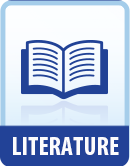|
This section contains 335 words (approx. 1 page at 400 words per page) |

|
Consonance
Consonance is a form of rhyming. With traditional rhymes, the final vowel and the final consonant sounds appear in both rhymed words, as in "boat" and "goat" or in "lagoon" and "cartoon." When a poet uses consonance, the vowel sounds may be different, only the final consonant need be the same, as in "stuff" and "off" or "monk" and "sock." The repetition helps draw the poem together but not as tightly as a traditional rhyme might do.
Salter uses different forms of rhyme in "Tromp l'Oeil." There are traditional rhymes, such as "eye" and "lie" in stanza 3 or "day" and "play" in stanza 5. There are also off rhymes, or imperfect rhymes, as in the similarities between "shutters" and "shatters." More often than is common, though, the poem uses consonance. Through the use of pairings such as "on" with "again," "strike" with "clock," and "wash" with "fresh," the poem...
|
This section contains 335 words (approx. 1 page at 400 words per page) |

|




